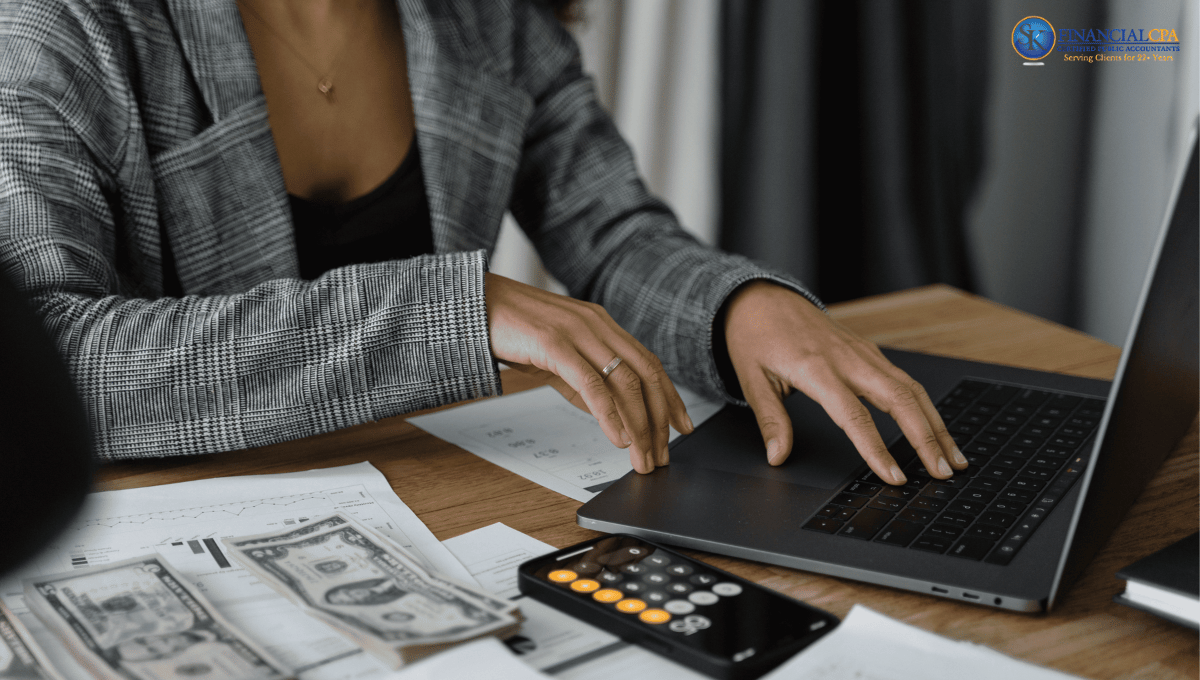
What is Modified Adjusted Gross Income? step-by-step-guide
Modified adjusted gross income is your adjusted gross income plus items the IRS adds back such as tax exempt interest selected foreign income and some deductions. It is used to decide who can claim credits deductions and other benefits.
Check here: Best and Reliable CPA services in FL,US
What is Modified Adjusted Gross Income?
The IRS uses a metric called modified adjusted gross income to determine who is eligible for certain tax benefits. Unlike AGI, which is your gross income minus specific adjustments, MAGI adds certain items back into your AGI. These items can include deductions related to foreign income, student loan interest, and IRA contributions, among others.
Example: Your AGI is $90,000. You also have $3,000 of tax exempt bond interest and $8,000 of excluded foreign income. Your MAGI for rules that add those items becomes $101,000
What Modified Adjusted Gross Income adds back
-
Tax exempt interest from municipal bonds
-
Excluded foreign earned income amounts
-
Nontaxable Social Security amounts when a rule calls for it
-
Savings bond education interest exclusion when a rule calls for it
-
Deductions such as student loan interest or traditional IRA contributions when a rule calls for it
Note: What gets added back depends on the specific credit or deduction. Always check the rule for that item.
How to Calculate the Modified adjusted gross income?
-
Start with AGI from your tax return
-
Add back tax exempt interest
-
Add back excluded foreign income if the rule requires it
-
Add back any deductions the rule requires such as student loan interest or IRA deduction
-
Use that total as your MAGI for the rule you are testing
How Modified adjusted gross income affect in 2026?
- Student loan interest deduction MAGI phaseout starts above $85,000 single and above $175,000 joint. Fully phased out at $100,000 single and $205,000 joint.
- Savings bond education interest exclusion MAGI phaseout starts at $152,650 joint and $101,800 others. Fully phased out at $182,650 joint and $116,800 others.
- Foreign earned income exclusion $132,900 for 2026.
- Standard deduction for 2026 is $24,150 head of household and $16,100 single or married filing separately. Additional amount for aged or blind $1,650 or $2,050 if unmarried.
- Education credits MAGI limits AOTC and LLC phase out from $80,000 to $90,000 single and from $160,000 to $180,000 joint. These limits are unchanged.
- Medicare IRMAA income bands for 2026 are often announced close to year end. Current public numbers are projections only. Do not present them as final.
- Roth IRA direct contribution MAGI ranges 2026 IRS notice for 2026 has not posted at the time of writing. Best available projections suggest single from $153,000 to $168,000 and joint from $242,000 to $252,000. Label as projected until IRS confirms.
What is Modified adjusted gross income used for?
MAGI has some pretty important uses when it comes to planning your taxes, especially when dealing with retirement accounts, education credits, and health insurance subsidies.
Retirement accounts
- Traditional IRA deduction may be limited as income rises and when covered at work. Check the 2026 MAGI chart when released.
- Roth IRA direct contributions phase out as income rises. Use the projected 2026 ranges now and swap in the IRS numbers later.
Education credits
AOTC and LLC still use the same MAGI bands. Add a one line reminder that these bands are not indexed.
Health insurance subsidies
Marketplace premium tax credits for 2026 depend on 2025 poverty guidelines. If the enhanced credits expire after 2025, many enrollees above $400 percent of poverty could lose help. Flag this policy risk.
Detailed Breakdown of MAGI Components
To fully understand the concept of Modified Adjusted Gross Income, it's essential to understand the components that go into its calculation. Here are the common elements that can be added back to AGI to determine MAGI:
-
While tax-exempt interest income is not included in AGI, it is added back when calculating MAGI. This typically involves interest earned from municipal bonds.
-
If you have foreign-earned income that is excluded from AGI, it is added back when determining your MAGI. This includes income exclusions under the Foreign Earned Income Exclusion provision.
-
Portions of Social Security benefits that are not taxable may be added back to AGI when calculating MAGI.
-
Although the student loan interest deduction reduces AGI, it must be added back to compute MAGI.
-
Contributions to a traditional IRA that reduce AGI are also added back to determine MAGI.
-
Adjustments for passive activity losses may also affect your MAGI calculation.
Why is Modified Adjusted Gross Income Important?
MAGI is crucial because it affects your eligibility for numerous tax credits and deductions, such as:
-
These are subsidies for health insurance premiums under the Affordable Care Act.
-
MAGI determines whether you can contribute to a Roth IRA.
-
Eligibility for the American Opportunity and Lifetime Learning credits depends on your MAGI.
-
Higher MAGI can lead to increased Medicare Part B and Part D premiums.
Detailed Examples of MAGI Calculations
Let's examine some detailed examples to illustrate further how Modified Adjusted Gross Income is calculated and its implications.
Example : Single Filer with Multiple Income Sources and Deductions
Scenario: Mike is a single filer with an AGI of $95,000. He has $3,000 in tax-exempt interest income, $8,000 in excluded foreign-earned income, $1,500 in student loan interest deduction, and $5,000 in traditional IRA contributions.
MAGI Calculation:
-
AGI: $95,000
-
Add: Tax-exempt interest income: $3,000
-
Add: Excluded foreign income: $8,000
-
Add: Student loan interest deduction: $1,500
-
Add: IRA contributions: $5,000
-
MAGI: $112,500
Mike's MAGI of $112,500 will be used to assess his eligibility for various tax credits and benefits, such as Premium Tax Credits and education credits. By understanding the impact of different income sources and deductions on his MAGI, Mike can better plan his finances and optimize his tax outcomes.
Common mistakes with Modified Adjusted Gross Income
-
Using AGI when the rule asks for MAGI
-
Forgetting to add back tax exempt interest
-
Using last year tables for this year decisions
-
Missing the different MAGI rules for each credit
Strategies to Manage and Optimize MAGI
-
Shift income or deductions between years when you are near a cutoff
-
Max out workplace plans such as a 401k to lower AGI
-
Use an HSA if eligible since it reduces AGI and is not added back for MAGI
-
Manage investment gains if you are near a threshold
-
Ask a tax pro when your income picture is complex
Consulting with Tax Professionals
Given the complexity of tax laws and the importance of accurate MAGI calculations, consulting with tax professionals is highly recommended. Tax advisors can provide personalized guidance and help you navigate the intricacies of MAGI, ensuring you make the most of available tax benefits. Professional advice can be invaluable, particularly when dealing with complex financial situations or significant changes in income and deductions.
Conclusion
Understanding MAGI helps you qualify for credits lower costs and avoid surprises. Use the 2026 numbers above review your plan each year and update once the IRS posts final ranges for IRA items.
FAQs
1. What is Modified Adjusted Gross Income?
It’s your adjusted gross income plus tax-exempt interest, excluded foreign income, and some deductions the IRS adds back.
2. How do I calculate MAGI?
Start with your AGI, then add tax-exempt interest, foreign income, and any deductions the rule requires.
3. Why is MAGI important?
It decides if you qualify for credits, deductions, Roth IRA contributions, or Marketplace health subsidies.
4. What are the 2026 Roth IRA MAGI limits?
Projected limits are $153,000 to $168,000 for singles and $242,000 to $252,000 for joint filers.
5. What are the 2026 education credit limits?
You can claim them if your MAGI is below $80,000 single or $160,000 joint. They phase out above those amounts.
6. Does MAGI affect health insurance help?
Yes. Marketplace subsidies depend on your household MAGI and 2025 poverty guidelines.
7. Does MAGI change Medicare premiums?
Yes. Higher MAGI means higher Medicare Part B and D premiums once your income passes the yearly limit.
8. How can I lower my MAGI?
Contribute more to a 401(k) or HSA and manage income timing to stay under the cutoff.
9. Is MAGI the same as AGI?
No. MAGI adds back a few items the IRS excludes from AGI.
10. Do all tax credits use the same MAGI rules?
No. Each credit or deduction has its own MAGI calculation. Always check the rule for that benefit.
Follow SKFinancial on Facebook / Twitter / Linkedin / Youtube for updates.












